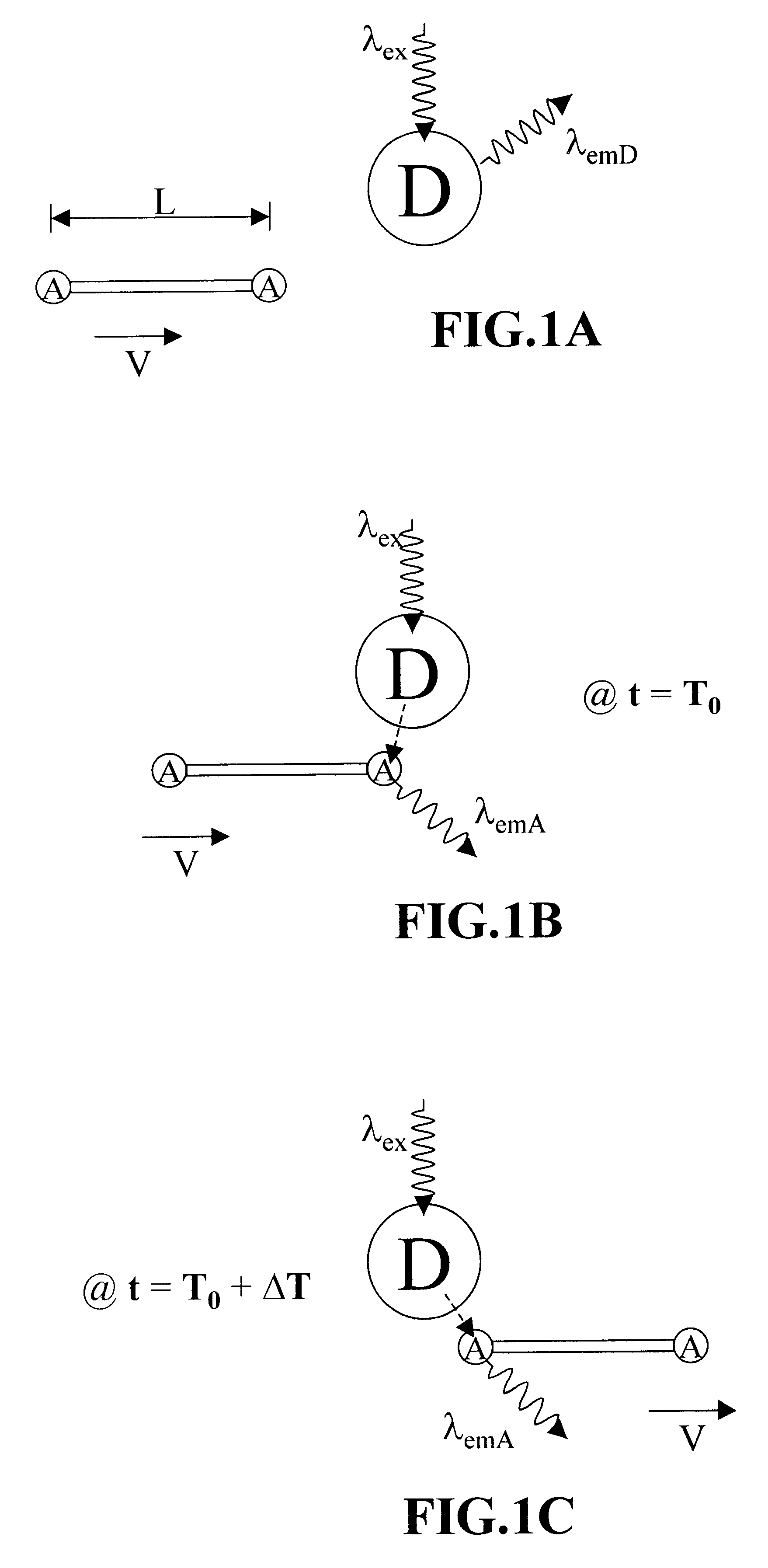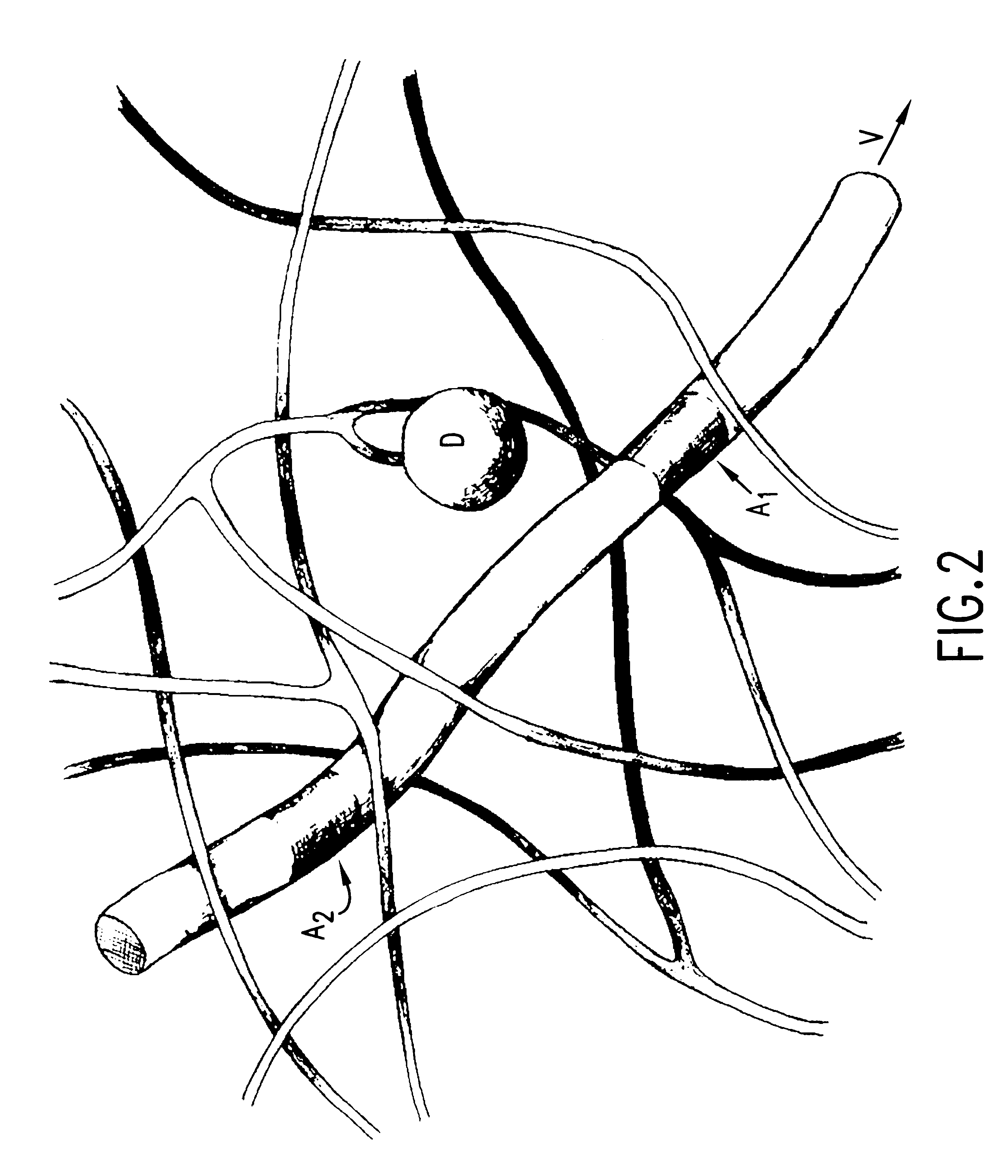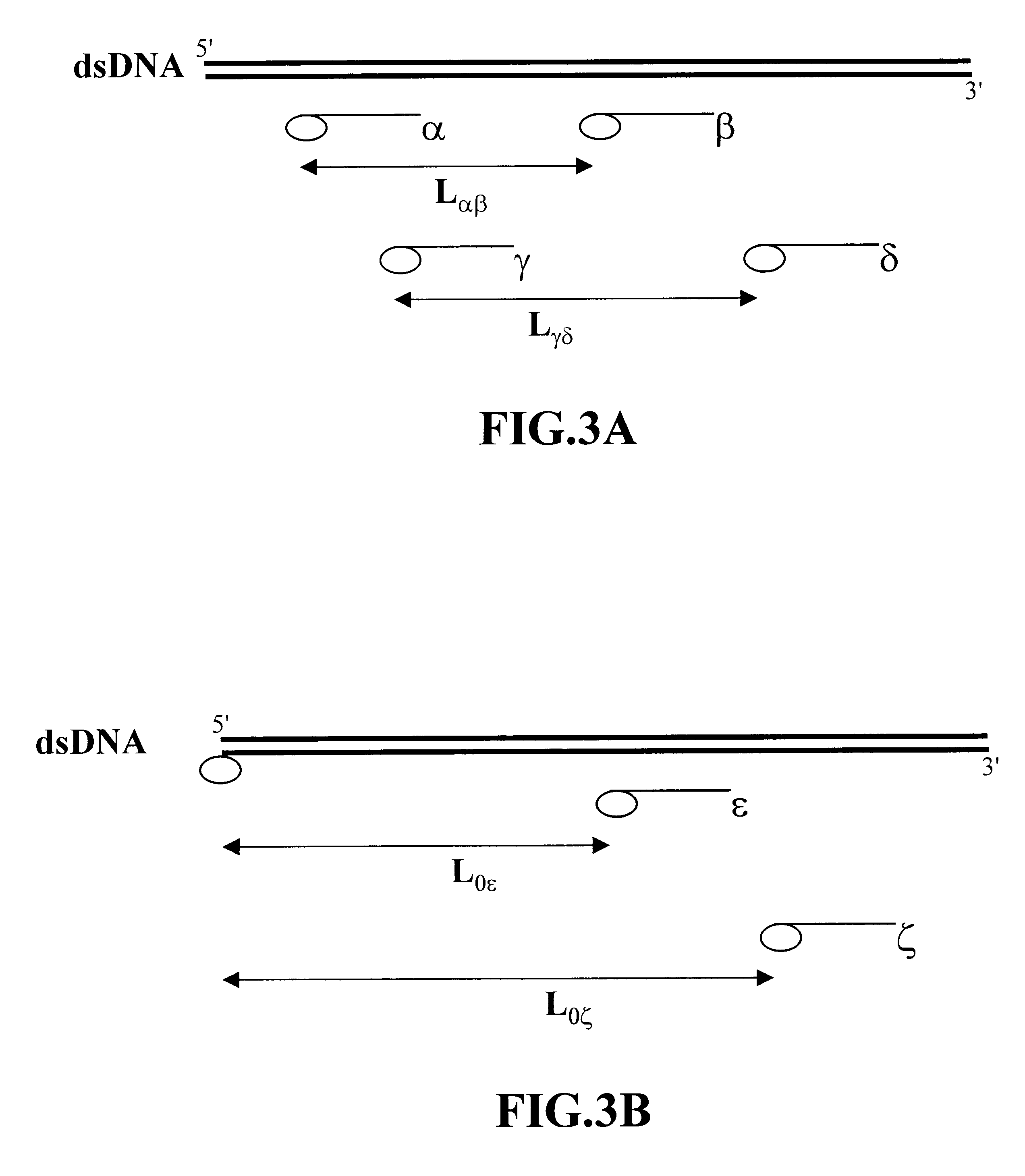Methods of analyzing polymers using a spatial network of fluorophores and fluorescence resonance energy transfer
a spatial network and fluorescence resonance energy transfer technology, applied in the field of methods and apparatuses for analyzing molecules, can solve the problems of limited number of nucleotides they can read, the practicality of their implementation, and the difficulty of exonuclease sequencing,
- Summary
- Abstract
- Description
- Claims
- Application Information
AI Technical Summary
Benefits of technology
Problems solved by technology
Method used
Image
Examples
example 1
6.1 Example 1
Preparation of Sample Devices Having Fluorescent Dyes at the Stations
Preparation of High Molecular Weight Polyacrylamide Labeled With Fluorescein
A concentrated solution (20-40 mM) of succinimidyl ester of carboxyfluorescein (fluorescein SE) was prepared in DMF (dimethylformamide). A solution of allylamine (H.sub.2 C.dbd.CH--CH.sub.2 --NH.sub.2) was prepared in 0.1 M sodium bicarbonate (pH=8.3). The concentrated solution of fluorescein SE in DMF was added to the allylamine solution such that the proportion of DMF in the final reaction mixture did not exceed 10% by weight, the final concentration of allylamine was 15 mM, and a 1.5-2 molar excess of the allylamine to the fluorescein SE was present in the final solution. The reaction proceeded for 1-2 hours in the dark at room temperature, and more than 80% of the fluorescent label was attached to the allylamine via the amino group.
A fluoroscein-labeled polyamide gel concentration was prepared as follows. After the reaction...
example 2
6.2 Example 2
Calculation of Illumination Intensity Needed to Achieve a High FRET Signal to Noise Ratio
The probability of energy transfer between donor and acceptor, P.sub.tr, is determined by the Forster factor, and is 1 / 2 at the Forster distance Z.sub.F. The overall number of FRET events, N.sub.tr, that occur during T.sub.tr, the time that donor and acceptor are within interaction proximity, is
N.sub.tr =P.sub.tr X=P.sub.tr X.sub.0 T.sub.tr (3)
where X is the number of excitations of the donor center during T.sub.tr, and X.sub.0 is the number of excitations of the donor center per second. If N.sub.tr.sup.3 1, the FRET probability is 1 and all FRET events are correlated (i.e. each FRET event has a corresponding correlated FRET event). If N.sub.tr <1, then N.sub.tr =P.sup.0.sub.tr, the overall probability of excitation transfer from a donor to an acceptor at a given illumination intensity. In this case, the probability of a correlated FRET event is P.sub.corr =(P.sup.0.sub.tr).sup.2. I...
example 3
6.3 Example 3
The Effects of Background Emission on FRET Measurements
The calculations performed thus far assume that donors and acceptors are ideal, that is, they are excited and emit within a finite spectral range only. In actuality, donor fluorophore emission peaks have low intensity shoulders or tails toward the red side of the peaks, while acceptor fluorophore excitation peaks have low intensity shoulders or tails toward the blue side of the peaks. Therefore, exciting donors will also directly excite acceptors to some extent. Furthermore, in addition to acceptor fluorescence, there is some emission from the donor at the same wavelengths.
Consider the dye pair fluorescein (donor) and Texas Red.RTM. (acceptor). Texas Red.RTM. emission has maximum at 611 nm. Although the maximum of fluorescein fluorescence is at 524 nm, it still has considerable emission (9% of its maximal value) at 611 nm. If the Ar laser line at 488 nm is used to excite the fluorescein, it would also directly excit...
PUM
| Property | Measurement | Unit |
|---|---|---|
| diameter | aaaaa | aaaaa |
| length | aaaaa | aaaaa |
| inner diameters | aaaaa | aaaaa |
Abstract
Description
Claims
Application Information
 Login to View More
Login to View More - R&D
- Intellectual Property
- Life Sciences
- Materials
- Tech Scout
- Unparalleled Data Quality
- Higher Quality Content
- 60% Fewer Hallucinations
Browse by: Latest US Patents, China's latest patents, Technical Efficacy Thesaurus, Application Domain, Technology Topic, Popular Technical Reports.
© 2025 PatSnap. All rights reserved.Legal|Privacy policy|Modern Slavery Act Transparency Statement|Sitemap|About US| Contact US: help@patsnap.com



